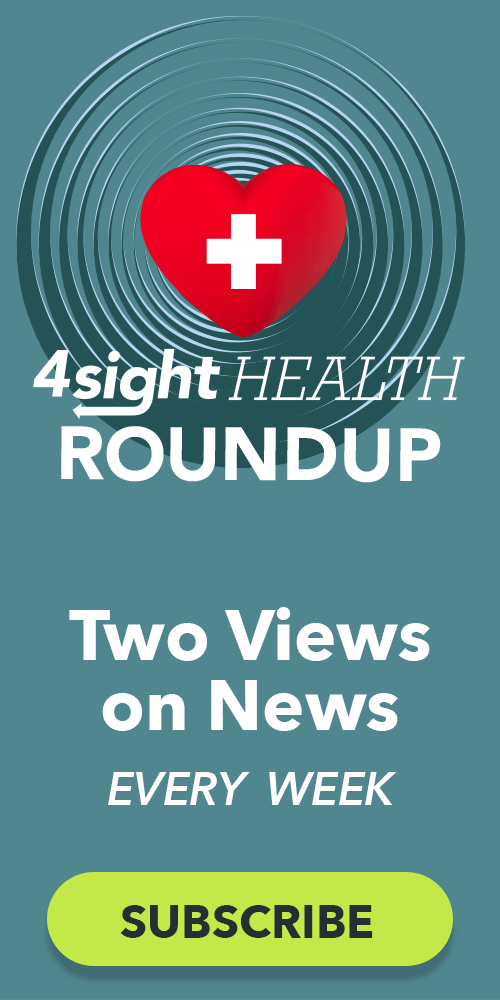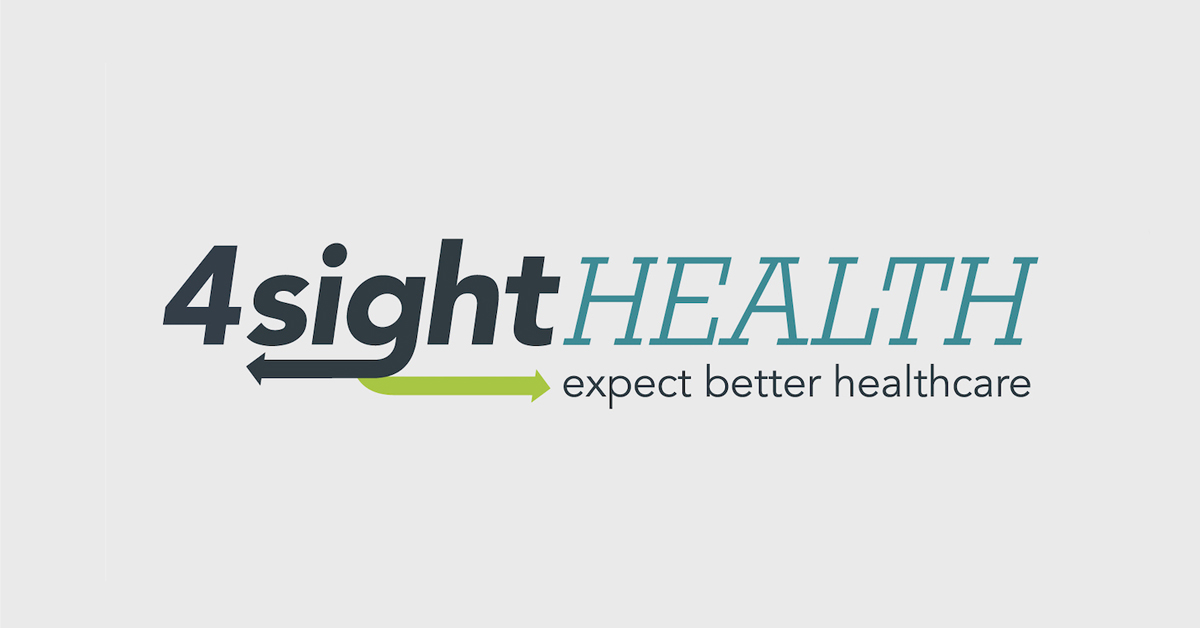August 12, 2025

The Tipping Point: The Coming Healthcare Revolution
Healthcare is on the cusp of a historic transformation. After a century of inertia, U.S. healthcare’s outdated operating system, built for acute episodes, institutional dominance and fee-for-service margins, is buckling under the weight of modern realities. Costs are unsustainable, consumers are restless and value is increasingly defined by outcomes, not volume.
These are key themes embedded within Paul Kusserow’s interview with McKinsey’s Ann Koffel. With McKinsey’s permission, we’re republishing their interview transcript, with a link to the podcast, on the 4sight Health platform.
Paul and I co-authored, “The Coming Healthcare Revolution” to chart the 10 macro and market forces we believe will fundamentally reshape American healthcare. We didn’t approach this book as distant observers, we’ve lived it. Paul as an executive driving change inside large healthcare companies, and me as a former healthcare investment banker and full-time policy analyst challenging the status quo.
It’s fascinating and sometimes surprising listening to how Paul describes the formative topics we explored and developed together. The best partnerships bring out the best in each partner. One plus one equals five.
Hearing my co-author bring our work to life, especially with Paul’s unique blend of strategic insights, literary flourish and operational candor, reminds me just how urgent and actionable our thesis is: healthcare is going to change more in the next 10 years than it has in the last 100. Our book published just nine months ago in November 2024. If we were publishing today, we’d shorten our transformation timeline to five years.
Paul’s conversation with McKinsey explores what’s driving that inflection point: demographic pressures, funding fatigue, consumerism, AI, and a system increasingly out of step with the needs of patients and families. If you’re ready to embrace a future built around people, not process, now’s the time. Join the coming healthcare revolution. Jump the barricades with us. Come for the ideas. Stay for the camaraderie. Embrace the challenge. Enjoy the repartee!
— David W. Johnson, CEO, 4sight Health, The Coming Healthcare Revolution
Healthcare At Its Tipping Point
—This podcast transcript was originally published by McKinsey & Company. It’s republished here with permission. Listen to the podcast interview with Anne Koffel, partner in McKinsey’s Boston office, and Paul Kusserow.
Anne Koffel: What inspired you and your coauthor, David W. Johnson, to write this book?
Paul Kusserow: I previously wrote a book called The Anatomy of a Turnaround: Transforming an Organization by Prioritizing People, Performance, and Purpose [McGraw Hill, July 2023], which was about turning around Amedisys, the company I ran for 10 years. Dave was my editor then; he’s a healthcare economist. We were looking at some of the ideas that were coming out of writing that book, and we started to talk about where we were in the journey of healthcare in the United States. We spent about six months doing extensive research, and the book started to form quite naturally. The thesis is that healthcare is going to change more in the next 10 years than it has in the past 100.
Anne Koffel: You say the healthcare revolution has stemmed from the industry’s complacency in an ever-changing world. What are some examples of this? Why do you think now is the tipping point?
Paul Kusserow: During our research, we went back more than 100 years to see how we got to where we are now — as we know, those who don’t learn from history are doomed to repeat it. We looked at something called the Flexner Report, which came out in 1910 and was basically the start of modern healthcare in the United States. It was written by Abraham Flexner, who was doing a project for the Carnegie Foundation that involved looking at medical schools and hospitals in the United States. What he saw appalled him, and he came out with this report about how to reform the U.S. healthcare system. It suggested building hospitals around academic centers and training physicians in the appropriate way so they could drive great care that’s research-based.
There was a huge transformation of the U.S. healthcare system in the 1920s. Of the 150 hospitals and medical schools that were open, 100 of them closed. What was left turned out to be the best healthcare system in the world. But while we were superior through the 1960s with this methodology, we had already outgrown it in 1970. Now, more than 50 years later, we haven’t progressed much. It’s as if we are still driving Model Ts while the rest of the world is driving modern cars. There are forces at work now that we believe will upend this model once and for all.
The Macro Forces Shaping The Next Era of Healthcare
Anne Koffel: You structure your book around macro forces, such as demographics and technology imperatives, and market forces, including care redesign. Do you see market and macro forces being additive or in tension?
Paul Kusserow: The macro forces, I think, are going to be the forces that cause change. Change is constant in the business world, and certainly in the healthcare world, yet our system has resisted major transformation for about 100 years, and the forces driving the change are irrefutable at this point. Combined, these forces will cause exponential change. In terms of demographics, for the first time, the old will outnumber the young by 2030. The fastest-growing demographic in the country is people aged 85 or older. The second fastest is 75 to 85 years old. The third fastest is 65 to 75. The world is becoming much older, and that has increased the focus on healthcare.
Another important change is that we are sick in a different way now. Instead of acute illnesses, which is what we experienced when Medicare and Medicaid started, 90% of all illnesses now are chronic. These are illnesses that people live with for 20 to 25 years, and they often start when someone is in their 60s. The worst thing you can do from an economic perspective is take care of chronic disease in acute situations or in institutions.
What’s more, Americans are now spending more on healthcare and scrutinizing the value of the care they’re receiving. We’re able to measure how much money the average American household is contributing toward healthcare, and it’s now up to 32%, which affects the ability for people to have discretionary spending that they can use throughout the rest of the economy. Now consumers are saying, “Am I really getting value there, and do I really know what I’m buying?” When they look at the answer, it’s not a great answer. Clarity, transparency, and the fact that consumers are paying more out of pocket for these services will result in some real conscious consumerism. And who are the best consumers but people in the United States?
Anne Koffel: You mention funding fatigue as a significant macro force. Can you explain what you mean by that and its effect on the sustainability of our healthcare system?
Paul Kusserow: I look at this from an employer’s perspective: I ran Amedisys for 10 years. We had 22,000 employees, and we were self-insured, and every year we saw increases in how much we were spending. This really started to affect how much we were able to pay our employees, particularly in an inflationary environment. So we were looking for alternatives to try to give money back to people.
The tipping point is where we’re at right now. About a third of people’s incomes are going toward healthcare. The average American household makes about $86,000. About $12,000 of that is being pushed out due to healthcare inflation, and it could be spent elsewhere. Americans are getting fed up with this, and that fatigue among self-insured employers and consumers is starting to reach a strong tipping point.
Anne Koffel: Another macro force you mentioned is the technological imperative. How do you see advancing tech demanding change from the healthcare industry?
Paul Kusserow: In the book, we considered how efficient we are as a healthcare industry. The data since 1970 shows that the growth in the number of clinicians is about 200% and the growth of administrators is 3,800%. So where has the money gone when we look at that growth? Some McKinsey work that we quoted in the book says a healthy company has about 0.8 people to support each healthcare provider, and in healthcare, it’s 10-to-1. Right now, administrative costs are driving inflation. We saw that there were more than five million people just doing healthcare administration.
So what can AI do? AI connects dots — it can find information and piece it together and build good storylines. U.S. healthcare is such a fractured business. AI can help put together narratives in processes, such as prior authorization to make sure payments work according to the rules. We estimate that the revenue cycle management business alone could save about $1 trillion in work it’s already doing. I think that’s where a lot of AI initiatives are going to start.
We’ve also been using AI clinically in home health. There is a home-health business we’ve used and invested in called Metalogix that enables us to drive best-outcome utilization for each individual. It has produced more-efficient care at higher quality, and we’re able to save a quarter to a third of what we would normally spend on clinical expenses.
The Market Forces Spurring Care Model Innovation
Anne Koffel: Many of the market forces you say can change healthcare are focused on whole-person care, or patient-centered care. What are the benefits of this approach? What innovations in care model design give you the most hope for the future?
Paul Kusserow: Some research says about 20% of the care needed to optimize outcomes is clinical. In the United States, clinical care is all we really focus on. But when you’re chronically ill and you’re living with a disease for 20 or 25 years, it’s a long game. You obviously have to have that clinical diagnosis, but to handle 20 years of chronic illness, behavioral health is very important. Activities of daily living — making sure you’re bathing, taking your medicines, exercising and getting the right amount of sleep — are also very important. And then there are the social determinants of health, which are about dealing with things that are environmental, that deal with access, and that deal with things like loneliness. When you add these together, that’s how we can address chronic illness. And we have to do this on an individualized basis, which is where technology can help. For example, at Amedisys, we had customized care plans that take all these conditions into consideration to build whole-health models.
Anne Koffel: The last market force is about empowering caregivers. How do you see the role of caregivers evolving? And what do caregivers need in terms of support from the health system to be effective?
Paul Kusserow: I think caregivers are essential. As the older portion of our population grows, we’re starting to see a real scarcity of caregivers. We will never have enough doctors. We will never have enough nurses. We will never have enough licensed clinicians. So what do we have to do? We have to take people who are not clinicians and make them caregivers. As I said, clinical care accounts for 20% of all care, and other people who are unlicensed can do some of this care. I’m the chairman of Careforth, a company that helps unskilled caregivers become caregivers in the home to help a person who may be quite ill and on Medicaid. We’ve seen phenomenal results. Caregiving and unskilled caregiving, particularly in the home, are growing at an enormous pace.
The other piece is the productivity of caregivers: making sure that licensed clinicians do the right thing at the right time and don’t have to get involved in some of the things that other people can do for them. You can drive productivity and extend that expertise much better through technology, electronic health records, and individualized, customized care plans. That’s where I think AI can be very helpful, too — in not only diagnosing what needs to be done and in what areas but also parsing that information out and putting together schedules so people can get the care they need.
The Move Toward Having It All
Anne Koffel: You’ve described some transformative changes. The healthcare industry is a $5 trillion chunk of our economy that has been extremely slow to accept change. Can you help us feel more optimistic about healthcare’s ability to change and evolve?
Paul Kusserow: Compared to the rest of the Organization for Economic Cooperation and Development (OECD), healthcare in the United States is two to three times more expensive with much worse outcomes. We studied other countries. Portugal, at about a fifth of the cost, produces much better outcomes because it has community-based care. It uses primary care, which is another area we need to bolster: primary care physicians and nurses who can direct healthcare within the community. As we migrate out to the community, I think we’ll start to see much better results, and I think that’s what people want. They want to be able to see those caregivers outside of an institutional setting.
Anne Koffel: You ended the book with a chapter called “Guns and Butter.” Can you explain this analogy and whether you believe it’s possible to achieve a state in healthcare with both guns and butter? How do you think the system will look in five to 10 years?
Paul Kusserow: “Guns and butter” is taken from a speech by Lyndon B. Johnson, who was basically saying that you can have it all. I translate it as, “You can have your cake and eat it too.” I think we can. We have such strong healthcare within institutions, but we need to shrink those institutions. We have good technology that can migrate care out into the community. I think we’re going to catch up to most of the rest of the world and even leapfrog other countries. I’m very optimistic about it.
A lot of the companies that we profile in the book are going to have the same types of characteristics. They’re going to do value-based care, so they’re going to take responsibility for the care and outcomes they deliver. They’re going to be community-based. They’re going to be holistic. They’re going to be individualized and customized. I think they’re going to be democratized, so there will be much better access. For the book, we looked at the city of Chicago and saw that the lifespan of people on the North Side of Chicago was 90 years, while the lifespan on the South Side of Chicago — a more challenged community — was 60 years. In one city, the average life variance is 30 years. We have to improve accessibility in the community, driving primary care and addressing some of the issues with chronic illness that are out there.
Much of this incredible inflation in healthcare is driven by obesity. There are correlations between obesity and diabetes, heart disease, certain types of cancer, and even Alzheimer’s. As consumers learn more about what’s driving costs and as they participate more in their own healthcare and pay for more, I think savvy consumerism will start to kick in. I’m excited about where we’re going and for some of the innovations that are occurring in the United States.





